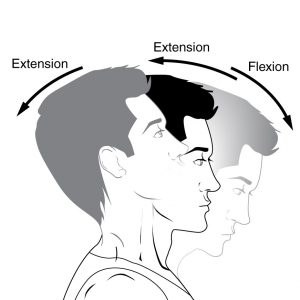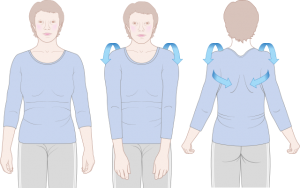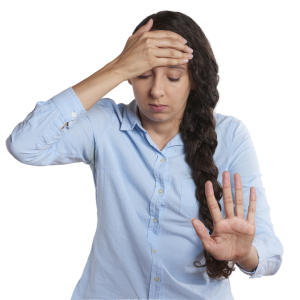Many of us suffer from headaches (“Nah, in this day in age?” She asked sarcastically) including yours truly, and I want to help remind everyone that, though I wish I could physically help everyone, there are things we can do for ourselves at home or at the office to help headaches and possibly prevent migraines from occurring.
Help Keep Headaches away with the Handy Adult Beverage- WATER
 According to Med Health Daily(1), the human body is over 60% water with the brain being approximately 80%, and your muscles being 75% water. Caffeine is fine and dandy, but the real handy, adult drink is water. Your body simply needs water to function. Water is the elite necessity. Symptoms of dehydration can vary, but the most common are headaches, dark colored urine, dizziness or light-headedness, fatigue, infrequent urination, and extreme thirst.
According to Med Health Daily(1), the human body is over 60% water with the brain being approximately 80%, and your muscles being 75% water. Caffeine is fine and dandy, but the real handy, adult drink is water. Your body simply needs water to function. Water is the elite necessity. Symptoms of dehydration can vary, but the most common are headaches, dark colored urine, dizziness or light-headedness, fatigue, infrequent urination, and extreme thirst.
Posture and repetitive motions can play a role in the muscle tightness that causes headaches.
Posture and repetitive motions are also a way that we build up stress in our neck and shoulders. Think of sitting slumped at your desk, often giving us that “pulling” feeling at the base of our skull, also known as reduced function of the neck and shoulders. Stretching muscles in the neck, shoulders, and even the face will help these muscles relax and help prevent headaches.
Stretching can help combat the tight muscles that cause headaches
A 2018 study in the Journal of Pain Research {2) indicate that improved muscle function of the neck and shoulders through exercise, mobility, and stretching can help reduce the occurrence and intensity of tension-type headaches. I have a few stretches that rely on to prevent headaches.
Big Mouth Stretch to relax the muscles of the face and jaw.
My personal favorite face stretch is the classic Big Mouth Stretch. You know the one I’m talking about. Your eyebrows are up, eyes and mouth are wide open. I do these stretches and make several slow variations depending on what feels tight. Don’t worry, we all feel silly making facing at ourselves, but trust me. It helps. Anything that helps is worth it.
Use Head Rotations and Chin Tucks to Relax the Muscles of the Neck
Don’t neglect your neck. It goes without saying that your neck is pretty important. While sitting up straight in a comfortable position, begin to rotate your head from side to side in slow, meticulous motions. If you can, take your chin and turn it as far as you can to one side. Pause for 3-5 seconds. Then rotate to the other side and pause as well. I recommend doing these 5-10 times. I visualize an owl for these exercises. Sometimes I wish that I could turn all the way around like that too. Of course, once you stretch the sides, stretch your neck by tucking your chin to your chest as well as rolling it backward 5-10 repetitions as well.

Shoulders can store unsettled tension that cause headaches
Shoulders are also where we, as humans, often store a lot of unresolved tension. Try to remember that shoulders are not intended to be a stylish set of earrings. I myself often forget, and I don’t even have my ears pierced. So let’s bring those shoulders down a notch or two. Finding a balance in the way your muscles stretch is also important. It is ok to stretch one side slightly more than the other, should one side bother you more in comparison.
 Rolling your shoulders simultaneously in a circular motion forward, and then back is a great way to loosen up those troublesome muscles. If slouched shoulders are a problem for you as it is for myself, I recommend the scap squeeze. To do this stretch, pull those shoulders back, straighten the spine, squeeze the shoulder blades closer together and hold the pose for 3-5 seconds. Take a deep, slow breath in and out before releasing that pose as well.
Rolling your shoulders simultaneously in a circular motion forward, and then back is a great way to loosen up those troublesome muscles. If slouched shoulders are a problem for you as it is for myself, I recommend the scap squeeze. To do this stretch, pull those shoulders back, straighten the spine, squeeze the shoulder blades closer together and hold the pose for 3-5 seconds. Take a deep, slow breath in and out before releasing that pose as well.
I really hope some of these easy stretches give you some self-care ideas to start with, and you can always modify these stretches for whatever poses feel best to you. You will know what feels better for your body than anybody else.
(1) Pocock, Courtney; 2016; Body Water Percentage; Med Health Daily (Internet) [cited April 2020] available from – https://www.medhealthdaily.com/body-water-percentage/
(2) Madsen, Bjarne K et al. “Neck/shoulder function in tension-type headache patients and the effect of strength training.” Journal of pain research vol. 11 445-454. 23 Feb. 2018, doi:10.2147/JPR.S146050






About The Author: Tracy Seehafer
In her practice, Tracy utilizes a variety of techniques that help alleviate the client’s stress and pain.
Tracy truly enjoys working with pregnant women. Her experience with pregnancy massage makes her a go-to choice for moms to be—many of whom Tracy has seen during multiple pregnancies.
Tracy enjoys spending time with her family, has a love for dogs, and can often be found in boots that give the nod to her Kansas roots.
More posts by Tracy Seehafer